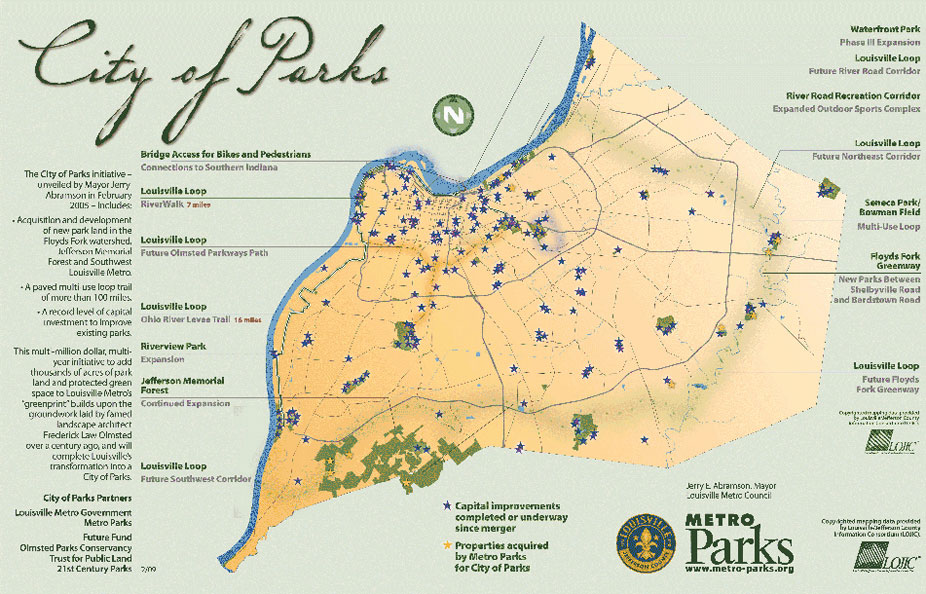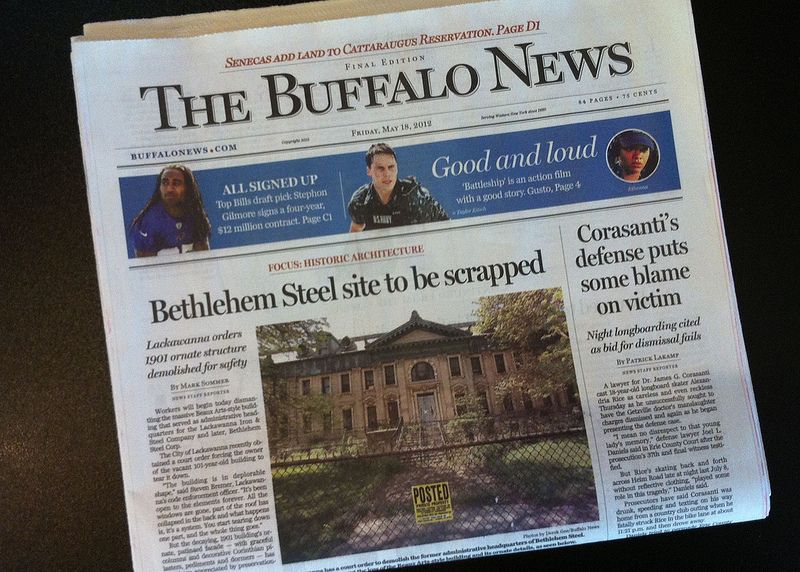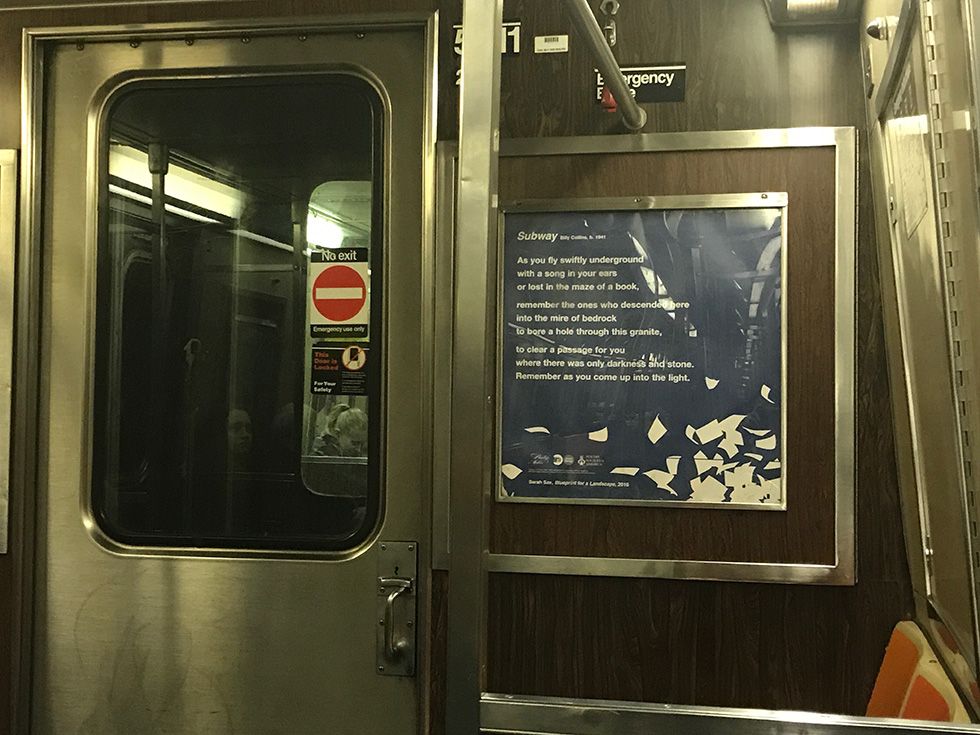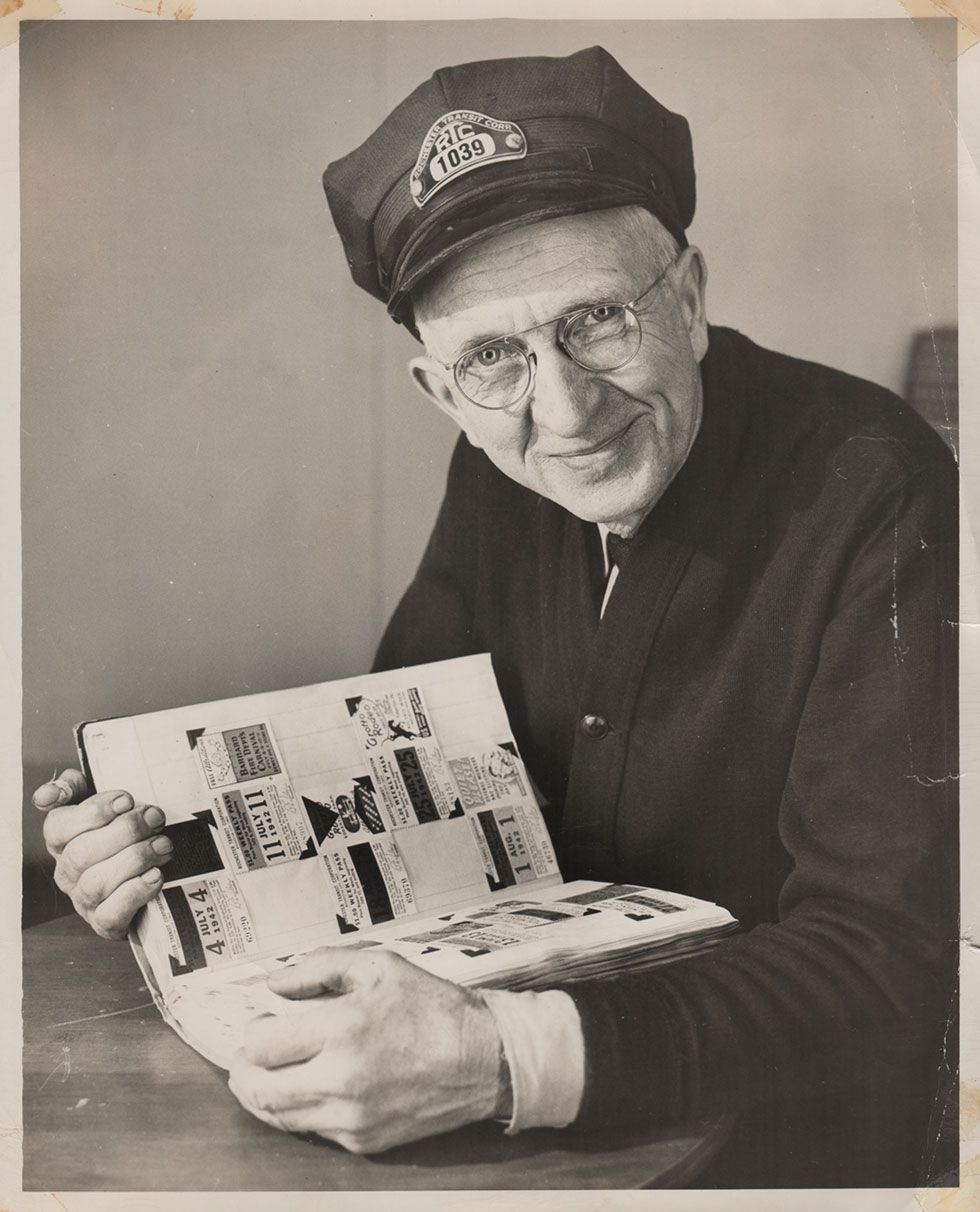This article was scraped from Rochester Subway. This is a blog about Rochester history and urbanism has not been published since 2017. The current owners are now publishing link spam which made me want to preserve this history.. The original article was published June 01, 2012 and can be found here.
![This is the former Bethlehem Steel North Office Building in Lackawanna, NY. Designed by noted New York City architect Lansing C. Holden, this magnificent Beaux Arts building was originally designed for the Lackawanna Steel Company in 1902. It will likely be demolished within weeks. [Photo: Derek Gee, Buffalo News]](https://senseofplace.dev/content/images/photos/buffalo-bethlehem-steel-headline.jpg)
The following is a guest post submitted by Joel Helfrich .
Submit your story today .
Historic buildings are under attack, especially in Western New York. Indeed, the month of May is potentially the saddest month locally for historic structures in recent memory. Within a short time, the Otisca Brewery building

in Syracuse, the Cataract Brewery buildings

in Rochester, and the Bethlehem Steel North Office Building

in Lackawanna will be gone--ashes on the dust heap that is our shoddy collective memory. All of these buildings were once useful--integral, in fact--pieces of our industrial past. Soon, these structures will be removed, thus helping three communities to ponder if they were ever part of the "rust belt."
In each case, the companies that purchased the properties failed to maintain the buildings and, quite possibly, encouraged decay in the hopes that one day the "eyesores" would be removed. That the companies have been let off the hook by city officials is mind-blowing, considering the code enforcement that occurs in most residential neighborhoods for even the most minor of infractions, including, but not limited to, growing wildflowers in front yards. As the Preservation Buffalo Niagara recently stated in a press release regarding the Bethlehem Steel building, "more responsible stewardship [is] needed" to prevent the ongoing efforts by companies in the future to carry out exactly the same.
![A partially collapsed stairwell in the former Bethlehem Steel North Office Building, Lackawanna, NY. [Photo: Kendall Anderson, Invisiblethreads.com]](https://senseofplace.dev/content/images/photos/buffalo-bethlehem-steel-stairwell.jpg)
For more eye-popping images that portray the beauty that still is the Bethlehem Steel North Office Building and the steel plant, go here

and here

.
As the mayor of Cincinnati recently stated during a WXXI radio interview while visiting Rochester: the first thing he considers when looking at a development project is how it enhances his city's history and builds on the culture of the place. The Otisca, Cataract and Bethlehem Steel buildings are integral structures of the places of which they are a part and enhance the sense of place. In the first case, the Otisca Brewery is one of the last remaining brewery buildings in Syracuse. The Cataract buildings were built to take advantage of the water and power from the High Falls of the Genesee River, the same location that constituted the original section of the City of Rochester. The City of Lackawanna was named after the steel company that built the office building in the first place. When combined with the former steel plant facility nearby (once the world's fourth largest producer of steel), the area could easily be a World Heritage Site [PDF] , patterned after successful ruins and adaptive reuse examples globally.
![The Zollverein Coal Mine Industrial Complex (German Zeche Zollverein) is a large former industrial site in the city of Essen, North Rhine-Westphalia, Germany. It has been inscribed into the UNESCO list of World Heritage Sites since December 14, 2001 and is one of the anchor points of the European Route of Industrial Heritage. [Wiki Photo: Zairon]](https://senseofplace.dev/content/images/photos/zollverein-essen-germany.jpg)
For example, the Zollverein Coal Mine Industrial Complex

, simply known as Zollverein, was a coke factory in Essen, Germany, and a UNESCO World Heritage Site. Germans had the foresight to let the complex remain as a tourist attraction that now boasts the world's largest ice skating rink in the winter and an industrial-strength Ferris wheel. People are allowed to climb all over the plant. Zollverein is part of a larger "Industrial Heritage Trail" that makes its way through Dortmund, Essen, Duisburg, and Bochum. Another part of the trail is Landschaftspark Nord in Duisburg that "was designed in 1991 by Latz + Partner (Peter Latz), with the intention that it work to heal and understand the industrial past, rather than trying to reject it." The impressively restored Zweckel Machine Hall in nearby Gladbeck is used for "cultural events, exhibitions and private celebrations." Check out the following links:
The success story of Ruhr former industrial sites

How the industrial Ruhr Valley became a Cultural Capital

Lesson's from Germany's Ruhr District, Part 1

But even closer to home, in the United States, we have a number of projects that have taken portions of America's industrial past and reused buildings, bridges, and other parts of the built environment for new purposes. Such adaptive reuse has literally created new public parks, recreation areas, and even self-contained communities.
![The Pearl Brewery, San Antonio, TX. [Source: NSIDE San Antonio Nov/Dec 2009]](https://senseofplace.dev/content/images/photos/pearl-brewery.jpg)
The restored Victorian era Pearl Brewery

on the banks of the San Antonio River in San Antonio, Texas, is a success story and a case in point. Pearl was once the largest brewery in Texas and now the entire complex is used for businesses and community opportunities such as a Farmer's Market, bike sharing, The Culinary Institute of America's Texas campus, and retail, residential, and restaurant spaces. But the successful adaptive reuse of this brewery is not the only example, nor was it the first. Industrial "ruins" and other "conversions" have occurred for a long time.
![Gas Works, Seattle, WA. [Wiki Photo: Joe Mabel]](https://senseofplace.dev/content/images/photos/gas-works-seattle.jpg)
Take Gas Works Park

in Seattle. In 1975, a New York Times journalist wrote, "Seattle is about to have one of the nation's most advanced pieces of urban landscape design. The complex array of towers, tanks and pipes of the gas works forms a powerful industrial still life ... serving both as a visual focus for the park and as a monument to the city's industrial past. The park represents a complete reversal from a period when industrial monuments were regarded, even by preservationists, as ugly intrusions on the landscape, to a time when such structures as the gas works are recognized for their potential ability to enhance the urban experience." Eric DeLony of the National Park Service wrote, "Gas Works Park will not only be a unique first in the United States, if not the world, but will set an important precedent for the future preservation of industrial structure through an imaginative plan for adaptive use."
![Below the Promenade Plantee, Paris. [Photo: Eric K. Washington]](https://senseofplace.dev/content/images/photos/promenade-plantee.jpg)
Take the Paris Promende Plantee

, a restored viaduct that now has trails, tunnel trenches, viaduct footbridges, shops, and other amenities. The Atlanta Beltline

and Chicago's Bloomingdale Trail

, touted as "Chicago's Next Great Park," are being constructed on former rail lines and have received a significant amount of attention. In fact, adaptive reuse of railroad lines is a popular activity. The Reading Viaduct


, is a case in point. So is Jersey City's "Sixth Street Embankment"

, which recently placed seventh out of 100 competing sites in the National Trust for Historic Preservation's "This Place Matters" competition ( learn more

). In St. Louis, there is the Old North St. Louis Restoration Group that is working to reuse yet another elevated railway

. Obviously the enormously successful High Line

in New York City is the best example of an elevated rail line bringing massive amounts of development dollars to a city ( learn more

). People want outdoor gathering places; reusing industrial places is one significant way to make that happen.
Closer to home, in Rochester, New York, the Friends of the GardenAerial

non-profit hopes to convert an existing pedestrian bridge that once carried automobiles (and so has already gone through one adaptive reuse rendition) to a "bridge of flowers"; build a second bridge over the High Falls; and construct a "winter garden." That group's efforts, I would argue, have been significantly hampered by the City's decision to bulldoze the Cataract Brewery

buildings nearby. The history and culture that will soon be removed can never be rebuilt.
![Walkway Over The Hudson [Photo: Andy Arthur]](https://senseofplace.dev/content/images/photos/walkway-over-the-hudson.jpg)

, one of the largest urban redevelopment projects

in North America, is getting significant attention. The Walkway Over the Hudson converted an abandoned railroad bridge, the first (or second) longest bridge in the world, to a pedestrian walkway

that has seen attendance outpace expectations.

The City of Louisville, Kentucky, is creating a "City of Parks." According to the city's website

, "On February 22, 2005, former Mayor Jerry Abramson and Metro Parks announced a multi-million dollar, multi-year initiative to add thousands of acres of park land and protected green space to Louisville Metro's 'greenprint.' This effort builds upon the groundwork laid by famed landscape architect Frederick Law Olmsted over a century ago, and will complete Louisville's transformation into a City of Parks." That Buffalo and Rochester are two of three or four complete Frederick Law Olmsted

park systems in the United States (Louisville is another) should encourage city officials to create new and dynamic spaces from our collective industrial heritage.
In each of these cases mentioned above, industrial buildings, structures built for industrial purposes, and former industrial areas were converted to new parks, pedestrian friendly spaces, and transformative new community assets. Indeed, all of the examples point to the fact that there are alternatives to demolition. The bottom line is that other larger and smaller cities "get it": older industrial spaces and places can be refashioned as unique parks, recreation areas, and restaurants, and can support residential and commercial development. If only Western New York had the same foresight.
* * *
About Joel Helfrich:
Joel Helfrich is an Adjunct Assistant Professor of history at Monroe Community College and a Visiting Assistant Professor of Environmental Studies at Hobart and William Smith Colleges. Joel is also a father, entrepreneur, educator, and activist who has worked on animal rights, environmental, historic and sacred sites preservation, and social justice issues. He holds the conviction that a myopic focus defeats the most important work any historian does--being an informed and informative member of society. He sees the environment as a site where much of his historical training can be brought to bear, so he continues to pursue those interests as well as others.


